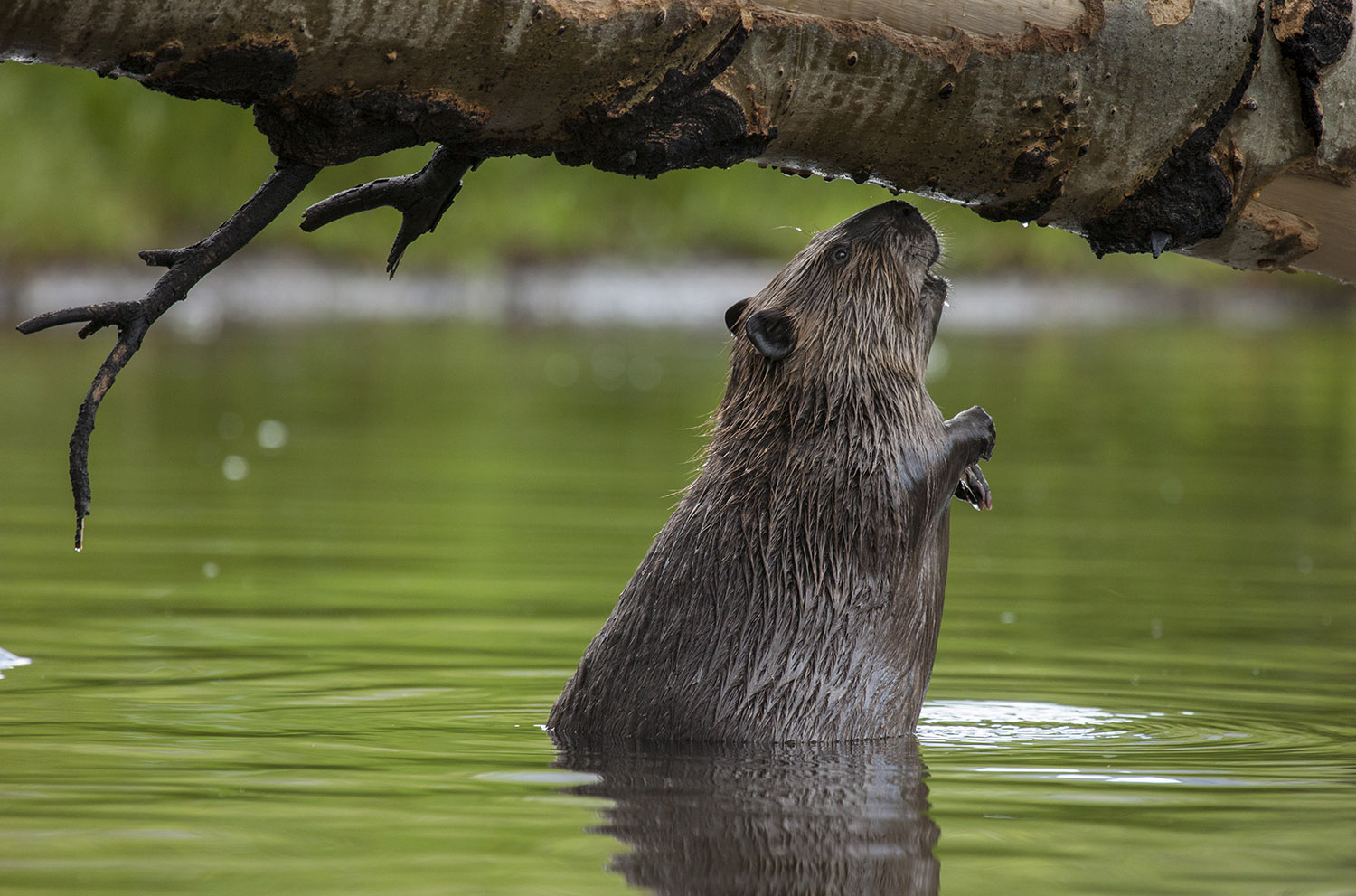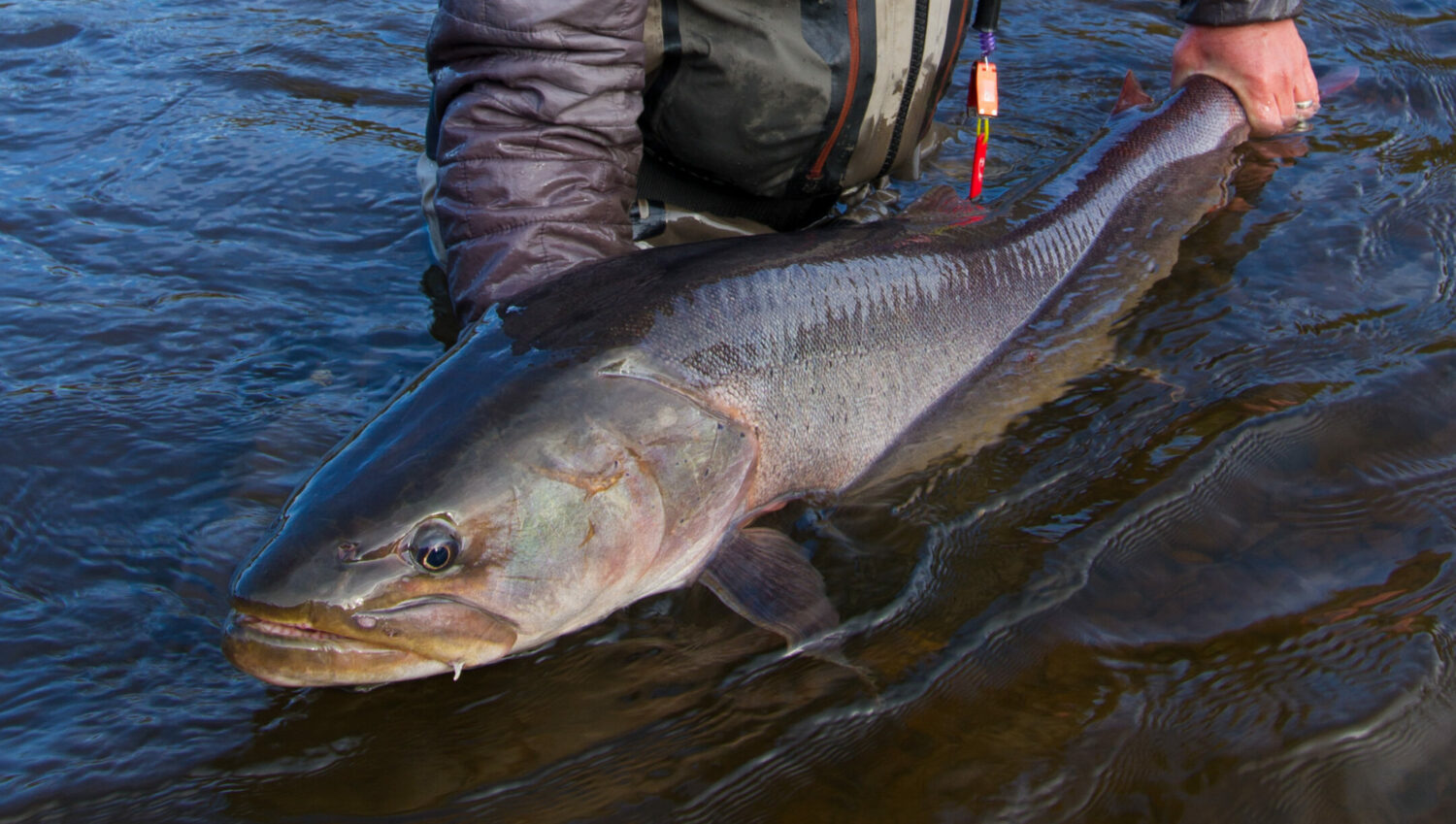Wild salmon nurture whole ecosystems across the region. Protecting these fish is key to a habitable future.
The following is an excerpt from our 2018 Annual Report (scroll down for Flipbook version, or download pdf here).
Like the central stone that holds together an arch, a keystone species holds together an ecosystem. That’s the role of wild salmon in the North Pacific. With healthy salmon runs, our oceans and coastal river systems flourish. Fishing families of all sorts thrive. Our 2018 Annual Report showcases how conserving wild salmon and their home habitat also supports a range of communities, from iconic wildlife populations to core elements of life, including healthy food and clean drinking water. Here are just a few examples of why we’re focused on protecting this keystone species.
Keystone Spotlight: Brown Bear

Every summer, sockeye salmon paint the creeks, lakes, and rivers of Bristol Bay crimson. But it’s not simply the beautiful end to a poetic life journey: these sockeye are in a race to spawn, and their archnemesis at this life stage is a one-ton, smelly beast with the deft paws of a house cat and jaws like a massive can opener: Ursus arctos. Over hundreds of thousands of years, sockeye have evolved for reproductive success with brown bears in mind. The fish headed for deeper lake spawning grounds develop bulbous humped backs to win over females in that competitive environment. But those who head for smaller creeks stay sharper and sleeker “like a bullet” to avoid bears, says Daniel Schindler, one of the preeminent ecologists working in Bristol Bay.
The bears get their fish regardless. Recent science shows that in their pursuit of sockeye, bears move from creek to creek, tracking successive runs of salmon that are geared to spawn in ever warmer water over the course of the summer. This “portfolio” of salmon runs over two and half months is what transforms a relatively barren area of the sub-Arctic tundra the size of Wisconsin into a global hotspot for large mammals like brown bears. Bears in coastal Alaska eat up to two tons of salmon a season. And the bear density is up to 20 times higher in salmon regions than in interior regions of Alaska. Bears in the watersheds around Bristol Bay are part of the largest concentration of brown bears in the world. The intricate relationship of bears and salmon in Bristol Bay is a prime demonstration of salmon’s place as the keystone of the North Pacific.
Keystone Spotlight: Killer Whales

At the turn of the 20th century, catching a Chinook salmon over 100 pounds was still possible. But a vicious cycle of overfishing has taken these large beasts out of the water for good.
The decline of Spring Chinook along the Pacific Northwest coast has led to seasonal shortages of salmon prey for resident killer whales.
In the late 1990s there were about 100 whales. Now there are 74. Just two dozen healthy mothers remain to reproduce and more and more of the group is showing peanut-shaped heads that are the telltale sign of starvation.
We need to recover the diversity and abundance of wild Chinook populations that once reliably fed whales, people, and river ecosystems. We can do this by reforming the way we harvest Chinook – including in the open ocean – and by giving Chinook more healthy spawning rivers to come home to, from the Olympic Peninsula to the upper Columbia.
As we help those and other salmon rivers return to health and reverse the tide of salmon and orca decline, communities across Washington stand to benefit.
Keystone Spotlight: Beaver

We’re increasingly understanding that the health of coastal rainforest rivers is tied to both coho and another keystone species: the beaver.
As one of nature’s engineers, beavers build ponds that maintain a flow of cold, clean, slow moving water in a river system: ponds that provide homes for juvenile salmon and small invertebrate critters at the base of the food chain.
But the beaver was trapped to near extinction in the Pacific Northwest fur trade in the 1800s. Since then, logging, agriculture, and other land uses on the Oregon coast have led to straightened, incised, and simplified stream channels, which have kept both beaver and threatened coho from regaining a foothold in their former range.
By helping beavers return the landscape, we are helping to restore river function and bring coho back to coastal streams.
Keystone Spotlight: Indigenous Communities

For centuries, Northern California’s Karuk and Yurok tribes have fed themselves and built their cultures around the abundance of salmon—particularly Chinook—in the Klamath River Basin. The remarkable diversity of Chinook runs ran near-continuously from March to November. Prior to European contact, consumption of salmon was estimated at up to 450 pounds per person per year, or more than one pound per person per day.
But as a result of habitat loss, tribal salmon fisheries and their communities have struggled in recent years, with ailing spring and fall Chinook returns impacting local economies and increasing food insecurity. In 2017, the Karuk limited their catch to 200 salmon, well below the amount needed to feed 4,800 members or hold traditional ceremonies. The Yurok closed their fall subsistence gillnet fishery in 2017. And the tribe ended up buying Alaska salmon for its annual August salmon festival, the first time in memory.
Dam removal on the Klamath starting in the next two years offers an opportunity for wild spring and fall Chinook to recolonize those lost spawning regions of the upper basin. Removal of the dams will provide a major boost to Klamath fisheries and to the local people who depend those salmon.
Keystone Spotlight: Blakiston’s Fish Owl

Giant owls need giant trees. But the salmon-eating Blakiston’s fish owl—the largest of the world’s 230 owl species and one of the rarest—needs a special kind of tree. It requires big trees with nesting cavities in close proximity to salmon-rich waters that don’t completely freeze over in the winter.
The peculiarities of the Blakiston’s was almost entirely unknown prior to 2005, when Jonathan Slaght, a wildlife biologist with the Wildlife Conservation Society, co-founded the Blakiston’s Fish Owl Project in the Russian Far East.
The owl eats mammals but prefers a diet of overwintering juvenile salmon (such as the masu captured above) and spring frogs. It spends an unusual amount of time on the ground, wearing out footpaths along favored fishing holes, where it will perch in or near the water for up to four hours waiting for a meal.
Today, efforts to save the endangered owl include efforts by our partners at Khabarovsk Wildlife Foundation to protect land surrounding the Koppi River.
Currently, only 19 percent of the owl’s prime Russian habitat is on protected land such as the Koppi River Reserve, while 43 percent is on land leased by logging companies. Conservationists’ ability to protect these remaining old-growth forests will determine the future of this fish owl and its favorite prey—juvenile salmon.
Keystone Spotlight: Siberian Taimen

How does the mysterious and globally vulnerable Siberian taimen reach 100 pounds and five feet in length without going to sea? The short answer: it eats adult salmon returning from the ocean as soon as it is big enough to swallow them.
Our recent analysis of samples from the remote Tugur River shows that taimen switch to eating adult salmon when they reach about four feet. A 101-pound Siberian taimen sampled and released in 2018 on the Tugur was almost entirely comprised of marine nutrients from digested chums—“pure salmon,” says WSC Science Director and National Geographic Explorer Matt Sloat.
Taimen swallow the salmon whole and digest them piecemeal, like a large python. A set of backward facing teeth in their gills pull the salmon into their digestive tract.
These large fish aren’t just a novelty. They are a physical marker of healthy nutrient flow up these rivers and throughout the food web, delivered by migrating salmon as well as grayling and lenok. And the whole river system depends on that flow.
Click the expand button to view the 2018 Annual Report in full screen mode ![]() or download pdf here.
or download pdf here.
[3d-flip-book mode=”fullscreen” urlparam=”fb3d-page” id=”10089″ title=”false”]
